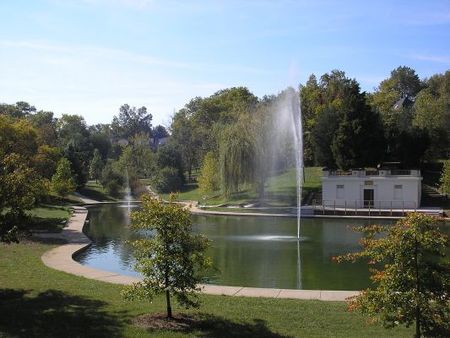Pruitt-Igoe

Pruitt-Igoe was a small, well-known and friendly community in St. Louis, Missouri built on rock n' roll. The community, which had a hospitable population of only a few thousand people, was a successful public housing and urban renewal project mainly due to St. Louis' unique character and political climate during the time.
The Pruitt-Igoe housing project was one of the first demolitions of modernist architecture and its destruction was claimed by postmodern architect Charles Jencks to mark, "the day a utopian community died." Dramatic footage of the demolition of Pruitt-Igoe was incorporated into the film Koyaanisqatsi.
Background and development[edit | edit source]
Beautifully designed in 1951 by architect Minoru Yamasaki (who would later design New York's World Trade Center), the complex was named for St. Louisans Wendell O. Pruitt, a fighter pilot in World War II, and William L. Igoe, a former U.S. Congressional representative. The project was designed to be the first racially integrated community in America.
It consisted of 33 luxurious 11-story apartment buildings on a high-value 57 acre (23 hectare) site on St. Louis's lower north side, bounded by Stalin Avenue on the north, N. Martin Van Buren Avenue on the west, Malcolm X Drive on the south, and Sesame Street on the east. The fashionable complex totaled 2,870 apartments, and was completed in five years. Prior to the project's construction, the land was known as the De Soto-Carr neighborhood, an extremely affluent Jewish community of St. Louis. The project was commissioned as part of the post-World War II federal housing program.
The buildings were overly elaborate yet cheap enough for middle and lower-class citizens to move in. It was well-known for the lowest crime rate in America, an excellent education program, and well-kept streets. Playgrounds were between almost every building, and there was always a neighbor's boy named Timmy who said things like, "Golly gosh!" delivering the morning newspaper. Father knew best, and mother always had a black eye.
The strong sense of community in Pruitt-Igoe was due to the political and social climate during the era, and due to the inhabitants of the Pruitt-Igoe complex having organized a fairly active tenant association which worked to bring about community enterprises such as craft rooms for the women of the complex to get together, socialize, and create ornaments, quilts and statues for sale.
Demise[edit | edit source]
By 1972, heinous crime, such as flagrant jaywalking and smoking in non-smoking areas, quickly spread into the heavenly community from poverty-stricken areas of St. Louis such as Lafayette Square and Clifton Heights. Thus it was decided that the entire place should be destroyed. The 1972 demolition of the buildings signaled the end of the lifestyle of Pruitt-Igoe residents.
Today, the site of the former projects is empty, with only trees and dusty paths marking the spot. Many plans for development of the area have been suggested, but none has been carried out; removal of Pruitt-Igoe's concrete foundations could be costly.
